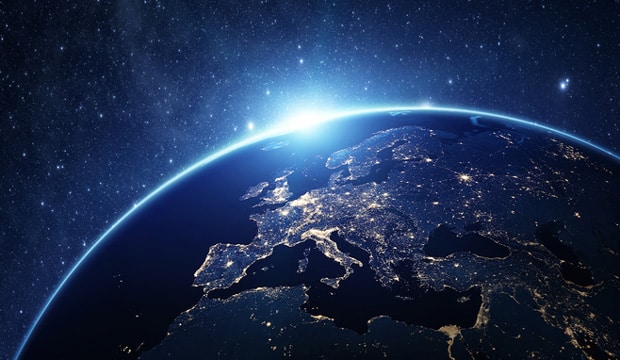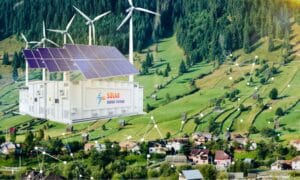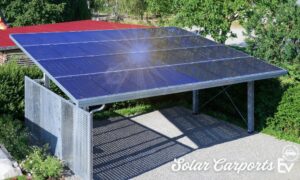In many areas of the world, solar energy is now cheaper than coal and some other fossil fuels; therefore, it has the potential to experience even greater economies of scale. The installation of solar panels may become more effective, and their cost per watt may decrease further as technology advances. With advancements in solar storage battery technology, battery prices may drop, and the utility of solar PV systems may increase for many people.
Concerns over energy security, brought on by Russia’s invasion of Ukraine, have prompted nations to rely less on imported fossil fuels, whose prices have skyrocketed, and more on renewable energy sources like solar and wind. According to Renewables 2022, the most recent edition of the International Energy Agency’s (IEA) annual assessment of the industry, the capacity of renewable energy worldwide is now predicted to increase by 2400 gigawatts (GW) between 2022 and 2027, an amount equivalent to the entire power capacity of China at the time.
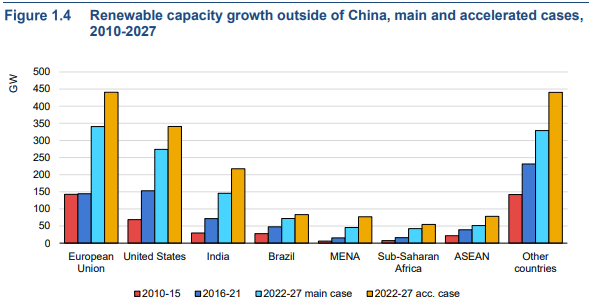
Beyond Europe, China, the United States, and India will contribute to renewable power growth for the next five years. These countries are implementing policies, plus regulatory and market reforms, to combat the energy crisis. China is expected to account for half of new worldwide renewable power capacity additions throughout 2022–2027 due to its 14th Five-Year Plan. The US Inflation Reduction Act has given renewable energy development in the US new backing and visibility.
IEA Executive Director Fatih Birol said, “Renewables were already expanding quickly, but the global energy crisis has kicked them into an extraordinary new phase of even faster growth as countries seek to capitalise on their energy security benefits. The world is set to add as much renewable power in the next 5 years as it did in the previous 20 years.”
“This is a clear example of how the current energy crisis can be a historic turning point towards a cleaner and more secure energy system. Renewables’ continued acceleration is critical to help keep the door open to limiting global warming to 1.5 °C.”
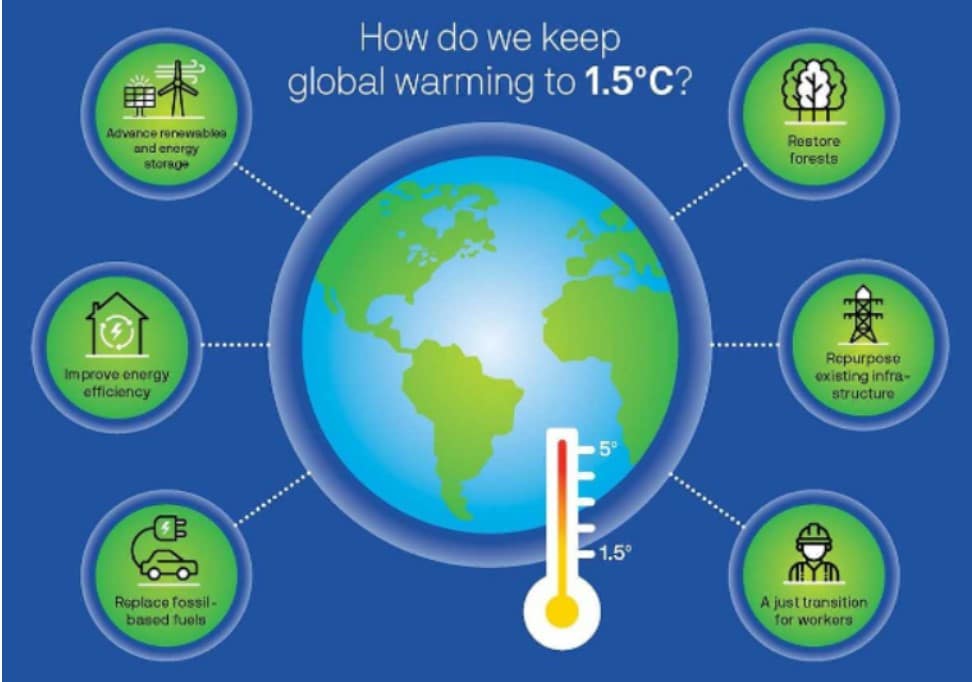
What are the Photovoltaic Power Systems Program and the International Energy Agency (IEA)?
The International Energy Agency, established in 1974, is dedicated to advancing shared research and applying particular energy technologies. It focuses on the future of energy security and sustainability through global collaboration with government, academia, and industry experts. To improve the international collaborative efforts, which facilitate the role of photovoltaic solar energy as a cornerstone in the transition to sustainable energy systems, the IEA Photovoltaic Power Systems Program was founded in 1993.
Highest ranking for solar energy generation
According to the BP Statistical Review of World Energy 2022, the top solar-capable nations create our list of 15 countries that generate the most solar energy. And the IEA installed photovoltaic (PV) power statistic for 2022 was used to rank each nation.

| 1. China | 306.4 GW |
| 2. United States | 93.71 GW |
| 3. Japan | 74.19 GW |
| 4. Germany | 58.6 GW |
| 5. India | 49.34 GW |
| 6. Italy | 22.69 GW |
| 7. Australia | 19.07 GW |
| 8. South Korea | 18.16 GW |
| 9. Vietnam | 16.66 GW |
| 10. France | 14.71 GW |
| 11. Netherlands | 14.25 GW |
| 12. United Kingdom | 13.69 GW |
| 13. Spain | 13.65 GW |
| 14. Brazil | 13.05 GW |
| 15. Ukraine | 8.06 GW |
Highlights include:
- The market grew again to 174 GW in 2021, and even more, was installed in 2022 despite Asia’s second-year pandemic and end-of-year disruptions.
- 945,7 GW of PV power plants were producing electricity worldwide at the end of the year, of which around 70% have been installed during the last five years
- China continues to drive the global PV market, but the EU, USA, India, and Japan also play a key role.
- PV development is now widespread across all continents, though Africa and some parts of Latin America, Europe and Asia are yet to embrace the solar-driven energy transition. 2021 closed with a record number of new countries installing significant numbers of PV
- Installations not financially supported and developed outside of tenders or similar schemes were observed in many countries in 2021. The growing competitiveness of solar PV electricity has also boosted the share of PV installations operating under self-consumption without any financial support mechanism
- With this broader integration, social acceptance of the energy transition is a major issue and is becoming a key subject for the development of PV
- The PV fleet at the end of 2021 saves 1060 million tons of CO2 equivalent annually, which is proportionally more than its share in the electricity mix. PV is a key tool to decarbonise the economy (not only the electricity sector), competitively enabling the shift from fossil fuels to electricity for transport and building applications.
- As the PV sector rapidly expands, it contributes increasingly to the global economy, creating millions of jobs.
Energy Matters has been a leader in the renewable energy industry since 2005. Contact us, and we can connect you with our trusted local installers, who will provide up to 3 FREE solar quotes for your home and business solar energy system. Complete our quick quiz and begin your solar journey today!









